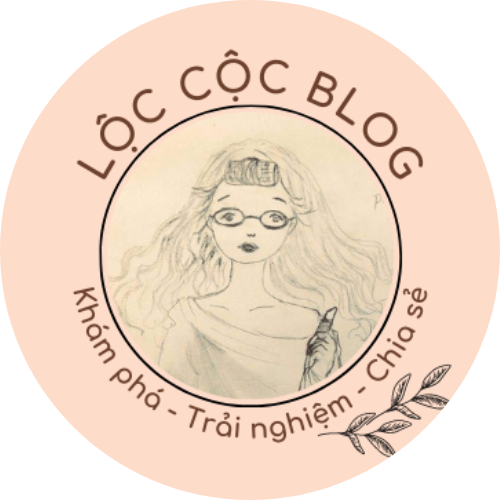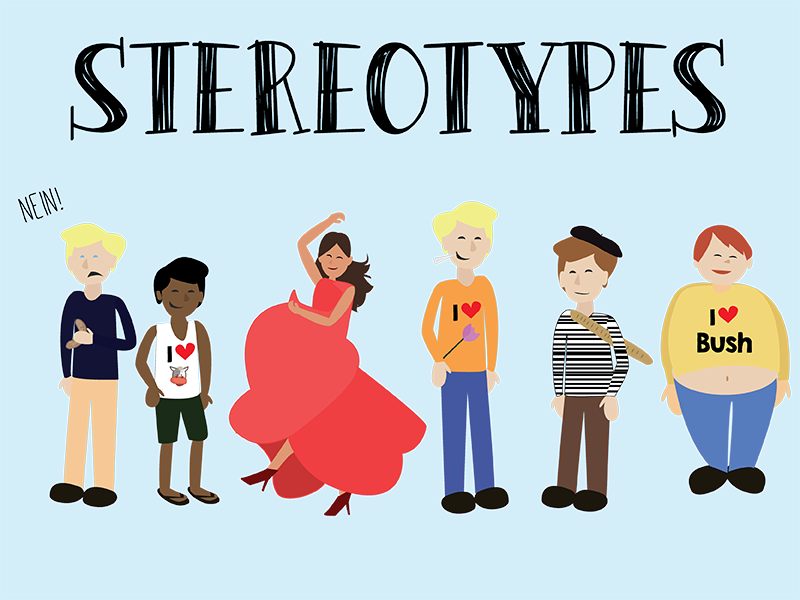Nguyễn Thị Bích Lộc
ULIS
QH15E11
Final Essay of Intercultural Communication
Topic 3:Intolerance and acceptance/appreciation of other social and culture differences are the aspects of the globalization world nowadays. What are some problems and solutions that frame the context for prejudices/stereotypes and acceptance/tolerance?
Essay
Culture is different and various from country to country, which forms the differences in belief and value among people, and even causes intolerance. It exists not only between this country and that country, but also inside a country with dissimilar cultures. In Viet Nam, there is a stereotype about people from Thanh-Nghe-Tinh provinces, while outside the border, in some Western countries, people have many wrong perception about Islamic people. Nowadays, in a globalization era, intolerance and acceptance or appreciation of other social and cultural differences are one of the aspects that is highly noticed in order that people can adapt and adjust to a new culture. Therefore, solutions to eradicate the stereotypes and conflicts among different cultures are necessary. It is important to know what frame the context of these stereotypes about Thanh-Nghe-Tinh people in Viet Nam and Islamic people, and then solutions can be found to make everyone tolerate and accept as well as appreciate them.
Ultimately, the concept of Intolerance, Stereotype, Tolerance, and Acceptance should be thoroughly understood. Intolerance, as Hecht & Baldwin’s (1998) definition, is the unwillingness to accept and treat someone equally because of their group’s characteristics, and people can use thought, action, or policy to do this (as cited in Baldwin, et al. 2014). Besides, Stereotype is one type of intolerance, Herbst (1997) defines it as “a generalization about what people are like, an exaggerated image of their characteristics, without regard to individual attributes” (as cited in Baldwin, et al. 2014). In other words, it is a kind of categorize based on the certain features of the group they belong to although they do not have these characteristics. According to Hecht & Baldwin (1998) Tolerance, on contrary to intolerance, referred it as “the application of the same moral principles and rules, caring and empathy, and feeling of connection to human beings of other perceived groups”, and appreciation is the action of accepting and highly valuing the good aspects in a group’s characteristics and individuals of this group (as cited in Baldwin, et al. 2014)
In Viet Nam, people from some center provinces like Thanh Hoa, Nghe An, Ha Tinh are one of the targets of intolerance, more specifically, the form that this intolerance takes is the stereotype. This stereotype is that: people from this area are “mean” and “aggressive”, and it is expressed by feeling, action and also, policy in the workplace. In facebook, there have been some groups that boycott Thanh Hoa, Nghe An people, and it is not difficult to find many negative comments about these people in the social networking sites. Around 2012, many factories in the industrial Zone in Ho Chi Minh city like Linh Trung 2 and Linh Trung 1 refused workers from Thanh-Nghe-Tinh provinces because the business owners said that, despite being hard-working, these workers frequently stole their products and acted violently to other workers (Trang, 2014). Some people also complained that Thanh-Nghe-Tinh workers were too solidary, especially when the few of them were fired, other fellow workers from the same areas would react by quitting work at the same time or quarreling with the companies and other workers, which made the companies face with serious difficulty; as a result, someone is even afraid of all Thanh-Nghe-Tinh people who live or work with them (“Lao động Thanh-Nghệ-Tĩnh”, 2014).
This discrimination of Thanh-Nghe-Tinh people is a consequence of overgeneralization when people see and judge an individual from this area as a group’s member with the group’s characteristics instead of an independent person. When interacting with these group’s members, some people, as their overgeneralization and lack of information, are afraid that they would be a victim of the “aggressiveness” and “over solidarity” of Thanh-Nghe-Tinh humans like in these cases above, so they choose to keep away from these people. Besides, the misunderstanding and lack of knowlegde about cultural features is the other reason. For example, they refuse to spend money on a party because they consider unnecessary, but some from other cities may claim that they are stingy and mean. Indeed, center area of Viet Nam has a severe condition for people to live, so whom from Thanh-Nghe-Tinh provinces have to be hard-working and thrifty, which has become a typical characteristic (Thong, 2009) but some may misunderstand it. As a consequence, they are discriminated and even isolated in both workplace and society. It is necessary that solution should be found to erase this stereotype and reduce the expression of this intolerance. First and foremost, the stigma that shapes the feeling and thought must be changed, and it seems that the influence of social media is one of the most effective ways. There are many positive characteristics of people in center provinces, the land with the proud tradition, culture and history and studious, hard-working people that social media can use to change this negative stereotype about this area into a better prospect, for example, by making movies, songs, advertisements, interviews, documentaries…related to these proud characteristics. By this solution, not only may people change their perspective about Thanh-Nghe-Tinh people, but also, they may even appreciate their precious aspects. In addition, there is possibly a method for those who strongly oppose to Thanh Hoa, Nghe An, Ha Tinh people in the workplace or school to change their mindset. This method is called “Contact theory”, detailedly, it recommends that some who do not like the other can improve their relationship by spending more time with each other (Baldwin, et al., 2014). In this circumstance, the business owner or the Labor Union may create a harmony workplace for these workers to work together as a small group or couple, or hold an event to make the bond of affection. The similar way can be done in other environments such as school or neighborhood. With all of the attempt and positive elements stated above, the intolerance between groups is hoped to be erased one day.
In a larger scale, anti-Islamic in the US is another stereotype related to religious and race. Kabir (2016) indicated that the stereotypes toward the Islamic people are mainly “Muslims hate Jews and Christians”, “Muslims hate LGBTQ”, “Muslims don’t believe in Jesus Christ or God”, “Islam promotes groups like Al Qaeda and ISIS”,…Particularly, Islamophobia has become serious after the 9/11 event in America. Zaal (2015) showed that, according to the Council on American Islamic Relations’ estimation, the disturbance toward normal Arab civilians in America has increased dramatically after 9/11 , while Cavendish et. al, (2011) described that non-Islamic people regarded a group of Arab or Muslim they met as “terrorism” and “danger”, and the action of burning copies of Koran on 9/11 anniversary in the US showed an extreme intolerance toward Muslim community (as cited in Brooklier, 2015).
In fact, the Media plays an important role in increasing this stereotype. Zaal (2012) indicated that a large number of negative images about Arab people appeared as a demonstration that they were “violent and barbaric” (as cited in Brooklier, 2015), which lead to the fear and hate crime against Muslim people (Brooklier, 2015). Again, the lack of information and knowledge also provokes the stereotype. For instance, the stereotype that “Muslims don’t believe in Jesus Christ or God” is inaccurate because that Jesus (Isa, in Arabic) appears in the Quran more frequently than Muhammad, and Islamic people recognize Jesus as a prophet as well as give God the name “Allah”, an Arabic word for God (Kabir, 2016). However, non-Islamic people may not know or find it, and they probably perceive what they see and hear from some wrong source. To change the perception toward the Islam is a tough mission. Media should be responsible for this misunderstanding first. Non-Islamic community should know the friendly image of the normal Islam. That wearing a scarf or a headpiece does not mean they are not terrorist; they just work, study as other people and deserve to be treated equally. Beside, the myths about Islam and their religious, belief and value should be made clearer by education, so that the myth like “Muslims hate Jews and Christians”, “Muslims hate LGBTQ”,…dissappear and people can understand the Islam culture and society better.
In conclusion, the reason of these two stereotypes both come from the similar source: the lack of cultural understanding and information, which leads to the overgeneralization about the group’s member; as for the intolerance of the Islam, the media is also a contributor. In both cases, education through media is a appropriate way to reduce the stereotypes. Besides, contact hypothesis can be applied to improve the relationship between Thanh-Nghe-Tinh people and whom from other areas. With these solutions, people can be well-prepared to be adaptable and effectively cross-culture communicate and create a harmonic world.
Words count: 1443
List of references:
Baldwin, J. R., Coleman, M. R. R., González, A., Shenoy-Packer, S. (2014). Intercultural Communiiation for everyday life. The USA: Wiley-Blackwell.
Brooklier, N. (2015, December 17). Islamophobia: The Stereotyping and Prejudice Towards Muslims Since 9/11. Law and justice in real time. Retrieved from https://hub.wsu.edu/law-justice-realtime/2015/12/17/islamophobia-the-stereotyping-and-prejudice-towards-muslims-since-911/
Kabir, K. (2016). 5 Common Stereotypes About Muslims, Debunked. Huffposst. Retrieved from https://www.huffingtonpost.com/entry/five-common-stereotypes-about-muslims-debunked_us_578e6d9ae4b004b4c9a37e78
Lao động Thanh-Nghệ-Tĩnh bị tẩy chay khắp nơi: Vì đâu nên nỗi? (2014, April 21). Baomoi.com. Retrieved from https://baomoi.com/lao-dong-thanh-nghe-tinh-bi-tay-chay-khap-noi-vi-dau-nen-noi/c/13644936.epi
Thong, N. H., (2009). Nhận diện vùng đất miền Trung Việt Nam trong bối cảnh lịch sử và văn hoá dân tộc. Tạp chí sông hương, 239. Retrieved from http://tapchisonghuong.com.vn/tap-chi/c137/n1343/Nhan-dien-vung-dat-mien-Trung-Viet-Nam-trong-boi-canh-lich-su-va-van-hoa-dan-toc.html
Trang, T. (2014, November 17). Sự thật đằng sau việc lao động “Thanh Nghệ Tĩnh” bị tẩy chay. Dan Tri. Retrieve from http://dantri.com.vn/kinh-doanh/su-that-dang-sau-viec-lao-dong-thanh-nghe-tinh-bi-tay-chay-1353520731.htm


Leave a Reply